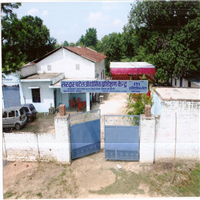Late Sri R.N. Lal Private ITI

College Description
Competitive education to the students comprising conventional syllabus and latest developments in the respective technical fields. Inputs on industry requirements and practices. Structured practical inputs in the workshop. Personality development inputs. Facilitation of employability of the students. Develop students as technical assets and good citizen of the Nation. Vocational Education in India aims to develop skilled manpower through diversified courses to meet the requirements of mainly the unorganized sector & to instill self employment skills in people through a large number of self employment oriented courses. Vocational Education is imparted through industrial Training Institutes & polytechnics. One of the weakness of Indian Education system is that it does not give due importance to vocational education. As a result, there is a mismatch between the skilled manpower required & skilled manpower available. Every year we produce millions of graduates who do not have the specific skill sets required by the market. If this trend continues, it would hurt our economic growth in the long run. To change this situation, first we need to change our mindset. In India, people are obsessed with attaining graduation degree & generally look down upon vocational education. This has resulted in a situation where on the one hand, there are scores of unemployed graduates & on the other hand , there is a huge shortage skilled manpower. 55% of Indians [550 million people] are below 30 years of age & 70% of Indians [700 million people] are below 35 years of age. While Indians need IITs, IIMs & Medical Colleges, the real requirement is for primary education, secondary education & vocational training. India’s population needs basic education facilities, while at least 90% need to get into some sort of vocational training after high school. In a country like Germany, the universities are empty. In fact, they are free for any one to join ( even foreigners are welcome) because very few students want to study there. University education does not necessarily prepare the youth for life, also, there is no guarantee of a job after a university degree. It is for this reason that 80% to 90 % of the youth, after standard 10th, opt. for vocational training where they work part time [at minimum wages], as apprentices, with industries and trade for two to four years and study simultaneously in a vocational training institute, for learning the theory and acquiring the relevant knowledge. This way, the business and trade get low cost manpower for two to four years, while the youth are learning a new trade, both on-the-job as well as theory in the vocational training institute. This combination producers youth with world class skills. There are 2500 trade options in Germany. These vocations covers the manufacturing and service sectors as well as the New Economy.


